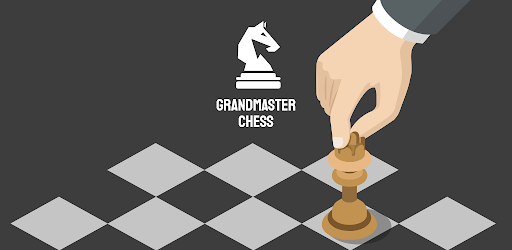In a sport once defined by the deliberate pace of classical play, modern chess grandmasters find themselves in a constant strategic shuffle, navigating a labyrinth of formats that demand adaptability, quick thinking, and, perhaps, a touch of madness.
The Chessboard`s Expanding Universe
For centuries, chess was synonymous with its classical format: long time controls, deep contemplation, and the monumental clash of intellects unfolding over hours, sometimes days. It was a marathon, a philosophical debate played out in 64 squares. Today, while classical chess remains the pinnacle, the landscape has diversified dramatically. We now have a bustling ecosystem of tournaments featuring:
- Rapid Chess: Faster paced, often around 10-60 minutes per player, demanding quick calculation and decisive moves.
- Blitz Chess: A whirlwind of moves, typically 3-5 minutes per player, where intuition and reflexes often triumph over meticulous analysis.
- Bullet Chess: The ultimate speed test, often 1 minute per player, where mouse skills are almost as crucial as chess understanding (though less common in elite over-the-board events).
- Freestyle Chess (Fischer Random/Chess960): A disruptive innovation where the back-rank pieces are randomized, effectively nullifying years of opening theory and forcing pure improvisation from the very first move.
This proliferation of formats, while undeniably exciting for spectators and lucrative for organizers, has introduced a fascinating, albeit taxing, dilemma for the elite players at the heart of the sport. Imagine a tennis player switching from Wimbledon`s grass to Roland Garros`s clay, then a quick indoor hard-court tournament, all within weeks, without adequate time for specialized training. This is the new reality for chess grandmasters.
The Mental & Strategic Gauntlet
The transition between formats isn`t merely a change in clock settings; it`s a fundamental shift in mindset and strategy. What makes a player formidable in classical chess—patience, intricate long-term planning, and exhaustive opening preparation—can be a hindrance in the frenetic pace of blitz, where tactical errors are almost expected and speed is paramount. Conversely, a blitz specialist might struggle with the psychological endurance and depth required for a multi-hour classical game.
Top players, such as reigning World Champion Gukesh Dommaraju, are frequently observed making these rapid transitions. One week, they`re engaged in the adrenaline-fueled chaos of rapid and blitz championships; the next, they`re settling into the deep, quiet contemplation of a prestigious classical event like the Sinquefield Cup. It`s akin to asking a concert pianist to perform a complex symphony, then immediately switch to improvisational jazz, and then a speed metal guitar solo, all at peak performance.
“It`s a big challenge for me indeed and I don`t know if everybody likes it, but I always feel that I am one step behind,” admits Dutch Grandmaster Anish Giri, currently navigating his own diverse calendar. This sentiment encapsulates the struggle: the constant feeling of playing catch-up, adapting on the fly, and never quite finding a consistent rhythm in any single format.
The Burnout Conundrum: A Cost of Progress?
While the growth of chess is a cause for celebration, the relentless schedule inherent in this multiformat environment raises serious concerns about player well-being. The lack of sufficient recovery time, opportunities for reflection, and dedicated preparation can lead to professional burnout, a phenomenon already observed in other high-performance sports. Coaches like RB Ramesh have attributed dips in player performance, such as that experienced by young prodigy R Praggnanandhaa, directly to over-scheduling. The demand is not just to play, but to excel across drastically different competitive landscapes.
The traditional approach to chess preparation—months spent meticulously analyzing opening lines and exploring variations—is increasingly unsustainable. Now, grandmasters often rely on highly specialized teams to manage their vast repertoire, with players themselves frequently having only a few days between tournaments to quickly re-calibrate their strategies. And then there`s Freestyle Chess, which, by design, throws the entire opening preparation rulebook out the window, demanding raw, unadulterated chess intuition. This further compounds the challenge, forcing players to master the unmasterable.
Classical Chess: Still the Crown Jewel?
Despite the allure of faster formats and their often substantial prize money, there`s a near-universal consensus among players and pundits: classical chess remains the ultimate test and the most prestigious format. It is the path to the World Championship, the title that every serious chess player dreams of. German Grandmaster Vincent Keymer articulates the shared sentiment: classical chess is where the aspirations lie, acting as the ultimate barometer of true chess strength and character.
However, the journey to that pinnacle has become significantly more arduous. The “distractions”—as some might ironically label the burgeoning rapid and blitz circuits—are also essential for financial stability and maintaining competitive sharpness. Players are caught between two powerful forces: the timeless pursuit of classical glory and the modern imperative to participate across formats to sustain a professional career. It`s a strategic tightrope walk where one misstep could mean missed opportunities or, worse, exhaustion.
Charting a Sustainable Future
The current era of chess is vibrant, diverse, and commercially successful. Yet, for its brightest stars, it presents an unprecedented challenge. The discussion isn`t about discarding new formats but about finding a sustainable balance. This might involve greater consultation with players on calendar planning, more standardized regulations across tournaments (as RB Ramesh highlighted the current inconsistencies in time controls and increments even within the same format), or perhaps even structured “off-seasons” to allow for recovery and focused training.
As chess continues its evolution, the question remains: Can the sport grow without grinding down its greatest talents? The future of professional chess may well depend on how effectively it addresses this grandmaster`s dilemma, ensuring that the pursuit of excellence across all formats doesn`t come at the cost of the very players who make the game so compelling. The chessboard has expanded, and now it`s time to ensure the players don`t get lost in its vast new territories.

